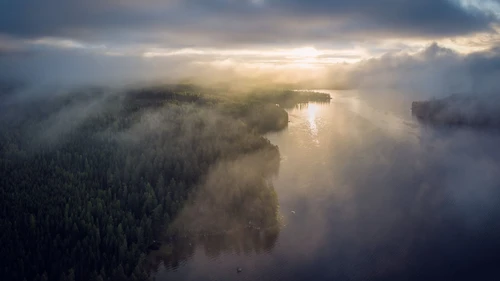When looking at companies, do you pay more attention to where they are now or focus more on where they’re going and their ambitions for the future?
It is essential to look at both. Companies have many stakeholders who need to understand the company’s current operations and future aspirations from different angles. Therefore, companies’ interest is to be transparent on their ESG aspects, whether it concerns all the excellent work they are doing or the issues they are working on to become even better. The narrative around how you work with challenging topics is essential – there will always be challenges. Still, the question is how you manage them and show that you are taking them seriously and trying to mitigate them. But ESG does not only hold challenges; there are great business opportunities as well, and the possibility of profiling a company as sustainable.
What are the most significant challenges when it comes to ESG analysis?
There are several challenges with ESG analysis. These can relate to data-availability or how the analysis can rely on support from automation and data processing. A challenge when it comes to data-availability is that is sometimes only available for the biggest companies, either via public reporting or via various data providers. It impedes the progress of analysis and makes it more difficult to compare companies. It is a known challenge, one which I believe both companies and regulators are realizing. It is of general interest that there is solid transparency around key sustainability-related challenges and opportunities, how various companies impact and are impacted, and how companies work to address these topics – and not only for the largest companies.
The EU Sustainability Taxonomy is very important. What does it mean for a bank like Nordea and for the companies we invest in or finance for the uninitiated?
The EU Taxonomy is a framework for defining how certain economic activities with a high climate impact should be undertaken to be compatible with a low-carbon and sustainable economy, firstly via activities mitigating climate change or helping to adapt to climate change. The Taxonomy will expand to other environmental objectives, like biodiversity protection and water resource protection. As a bank, we should assess to what extent our financing and investment activities align with the Taxonomy. This requires processes for assessing and documenting, and ways to communicate with our customers around the Taxonomy and its specific requirements.
What has been most surprising or unexpected to you when working with ESG analysis?
It may not be a surprise in itself, but above all, I find ESG analysis to be a fascinating and demanding subject. It requires in-depth knowledge and know-how of the ESG analysts, and is where I can contribute to developing even further expertise and processes. It’s indeed very rewarding!
How do you integrate sustainability into everyday life, and what sustainability matter lies closest to your heart?
My sustainability contribution consists of many small actions that I try to implement in everyday life and bring along my family. These can consist of not throwing away food, sorting and recycling waste, not buying items that are only “nice to have,” see if I can buy reused items, rely on renewable energy in my home, and so forth. Being conscious about the many small things that can be implemented with reasonable ease and believing that many people’s small actions can move our society closer to being sustainable is close to my heart.
Is there any sustainability topic that you feel doesn’t get the attention it deserves?
I think the challenges and opportunities connected with transitioning to a more sustainable society should be discussed even further, enabling people to reflect, understand, and be part of thinking and innovating around how we should jointly transition towards becoming a greener society. .. We need to do the transition swiftly, where here will either be a need to stop doing certain things or a need to do things differently, and we need to ensure this transition brings everyone along.
What do you love most about your work?
I am passionate about sustainability and, at the same time, very humble about how challenging the topic is. It is truly a holistic topic that takes its outset in deep scientific knowledge to understand how we can make it happen and a palatable issue for people. It is about a deep respect for nature and all the living and trying to create an equitable society for all people. I love both the opportunity to work with sustainability as a topic and that I have the chance to work every day with many incredibly talented and dedicated people that share the same passion.




